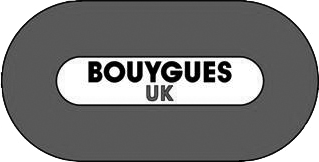July 2, 2016 10:26 am
Helical Piles aren’t a new concept; they’re gaining popularity fast thanks to their recognition as one of the most underrated engineering feats of the 19th century and as we learn more about the environment, we’ve naturally come to realise that Helical Piles are by far the kindest foundation solution when it comes to ecological awareness. Because Helical Piles use less machinery, less manpower and no concrete, their impact on the environment is significantly less than that of traditional foundations. They are also extremely effective…there are some very well-known landmarks which are still standing in the UK today thanks at least in part to their Helical Piles. Many historically interesting coastal structures were completed using the then, innovative and brand new...
June 20, 2016 10:25 am
Understanding when and where Helical Piles are the best solution in building is dependent on first understanding their purpose. Any foundation needs to be strong enough to support and to bear the weight of whichever structure rests above it. When we look at traditional foundations we come to realise that they are inherently weak. Varying soil conditions, water or plant life can all contribute to the detriment of a traditional foundation meaning that the building it supports can suffer damage. As moisture seeps into the fabric of the building, walls can crack or bow, floors can list and within the building, the weakness of the traditional foundation becomes all to apparent. In some areas, flood prone areas in particular, it...
June 13, 2016 1:23 pm
Helical piles are a geotechnical engineering feat with a strong, varied history of use. Read on to find some examples which may surprise you. Helical Piles Were First Used as River Moorings for Ships The first documented use of helical piles was in 1836, in which their recorded function was as river moorings for ships. These river moorings (also called ‘pile moorings’) consisted of poles with wide blades spiraling around them which were literally screwed into the bottom of the waterway. A portion of the poles breeched the surface of the water. Ships and smaller marine vessels would then secure ropes to the tops of several of these moorings when docking. Helical Piles Were Used to Protect the Banks of...
June 9, 2016 8:35 am
Grade II Listed Properties have distinct rules of engagement when it comes to planning permissions, which include aesthetic, practical and environmental considerations. History and Brief by Southwark Council ScrewFast received a brief by the local council to create foundations for two unusual pieces of art with unique history; caryatids (Greek sculpted female figures) that originally lined the entrance of Rotherhithe Town Hall in 1897. The Rotherhithe Town Hall had the caryatids attached to the façade that lined the entrance of the building. These pieces were created by international architecture sculptor Henry Poole, who also created art installations for St. Paul’s Cathedral and Westminster. Rotherhithe Town Hall was later converted into a museum and library prior to being bombed in...
June 6, 2016 1:21 pm
At ScrewFast Foundations, we often focus on the industrial applications that benefit from our piling systems. This includes the roads, rail, renewable energy and electrification, environmental and civil engineering industries. But screw piles have also been used successfully for years in domestic pile applications. Here’s one example of an architectural firm that implemented ScrewFast’s screw piles to solve the traditional challenges of building in an active period home. Building Challenges For Foundation of A North London Victorian Home Hampson Williams wanted to build a prefabricated rear extension on a North London Victorian home. The challenge was that the only access was a narrow front door (typical for period homes), which measured 826mm wide by 2,000mm high. All building equipment and materials would...
May 25, 2016 10:32 am
Helical Piles were first used almost 200 years ago and are generally credited to an Irish engineer Alexander Mitchell who discovered how effective they were in securing lighthouses and other structures around harbours where the ground is not stable. Since then, technological advances have meant that the use of Helical Piles in construction has gathered pace and they’re used today in both tension and compression load applications. They are a versatile product and the installation equipment needed is minimal when compared to that needed for traditional foundations, because of this it is a far simpler process to install them in access-limited areas. Another advantage to Helical Piles of course is that their installation is not weather-dependent; with traditional poured foundations...
April 9, 2016 8:29 am
Helical pile installation is increasingly common in the railway industry due to the speed and safety with which they can be installed. In Derby, we assisted with the installation of a 7M rail signal for Network Rail using our patented ScrewFast helical piles. Helical Pile Specifications There were 8 Screwfast helical piles and each was two metres in length. In this instance the piles were two metres long because we needed to keep below the overhead wires utilised by Network Rail. The overhead wires were also switched off during installation, for safety purposes. The length also keeps the piles at a manageable lifting weight while enabling the installers to easily reach up and screw in the bolts. The tube thickness...
January 22, 2016 5:48 pm
Changing the Landscape of Olympic Wastelands The remains of Olympic stadiums have received a lot of negative press. In a 2014 Guardian article, an abandoned £7 billion Olympic venue in Athens is featured in some sobering photographs. Enormous single-use structures are being built and then abandoned: the result is money invested in a massive addition to our carbon imprint. It’s no surprise that people have made entire art installations lamenting these wastelands. Athens Olympic Stadium was built in 2004 at the height of their economy. Ten years later the site seats and structural foundations are rotting in the ground. What can be done? Photo Credit : Popular Mechanics http://bit.ly/1lex1qu The Changing Landscape of Building Innovations have already begun to change...
January 22, 2016 5:48 pm
Changing the Landscape of Olympic Wastelands The remains of Olympic stadiums have received a lot of negative press. In a 2014 Guardian article, an abandoned £7 billion Olympic venue in Athens is featured in some sobering photographs. Enormous single-use structures are being built and then abandoned: the result is money invested in a massive addition to our carbon imprint. It’s no surprise that people have made entire art installations lamenting these wastelands. Athens Olympic Stadium was built in 2004 at the height of their economy. Ten years later the site seats and structural foundations are rotting in the ground. What can be done? Photo Credit : Popular Mechanics http://bit.ly/1lex1qu The Changing Landscape of Building Innovations have already begun to change...




















